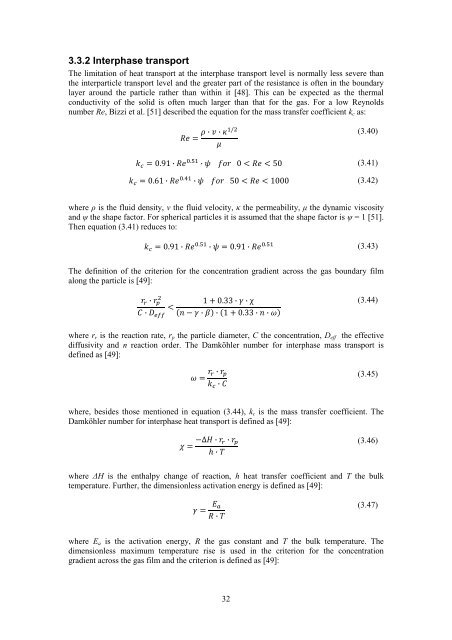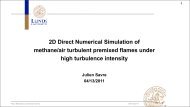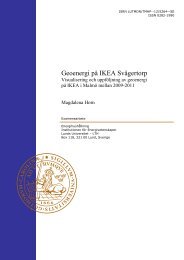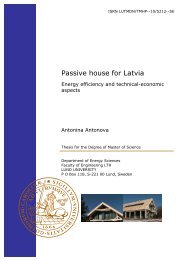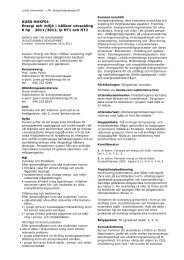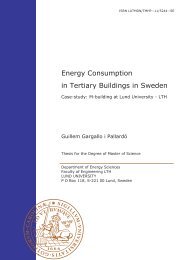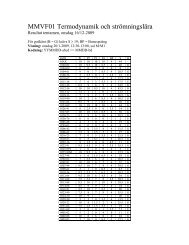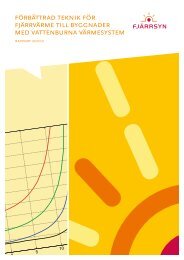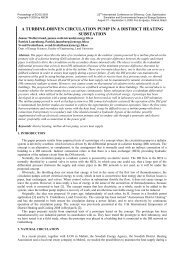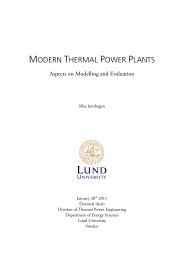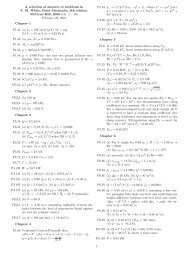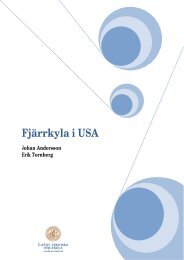Thesis for degree: Licentiate of Engineering
Thesis for degree: Licentiate of Engineering
Thesis for degree: Licentiate of Engineering
You also want an ePaper? Increase the reach of your titles
YUMPU automatically turns print PDFs into web optimized ePapers that Google loves.
3.3.2 Interphase transport<br />
The limitation <strong>of</strong> heat transport at the interphase transport level is normally less severe than<br />
the interparticle transport level and the greater part <strong>of</strong> the resistance is <strong>of</strong>ten in the boundary<br />
layer around the particle rather than within it [48]. This can be expected as the thermal<br />
conductivity <strong>of</strong> the solid is <strong>of</strong>ten much larger than that <strong>for</strong> the gas. For a low Reynolds<br />
number Re, Bizzi et al. [51] described the equation <strong>for</strong> the mass transfer coefficient k c as:<br />
(3.40)<br />
(3.41)<br />
(3.42)<br />
where ρ is the fluid density, v the fluid velocity, κ the permeability, μ the dynamic viscosity<br />
and ψ the shape factor. For spherical particles it is assumed that the shape factor is ψ = 1 [51].<br />
Then equation (3.41) reduces to:<br />
(3.43)<br />
The definition <strong>of</strong> the criterion <strong>for</strong> the concentration gradient across the gas boundary film<br />
along the particle is [49]:<br />
(3.44)<br />
where r r is the reaction rate, r p the particle diameter, C the concentration, D eff the effective<br />
diffusivity and n reaction order. The Damköhler number <strong>for</strong> interphase mass transport is<br />
defined as [49]:<br />
(3.45)<br />
where, besides those mentioned in equation (3.44), k c is the mass transfer coefficient. The<br />
Damköhler number <strong>for</strong> interphase heat transport is defined as [49]:<br />
(3.46)<br />
where ΔH is the enthalpy change <strong>of</strong> reaction, h heat transfer coefficient and T the bulk<br />
temperature. Further, the dimensionless activation energy is defined as [49]:<br />
(3.47)<br />
where E a is the activation energy, R the gas constant and T the bulk temperature. The<br />
dimensionless maximum temperature rise is used in the criterion <strong>for</strong> the concentration<br />
gradient across the gas film and the criterion is defined as [49]:<br />
32


